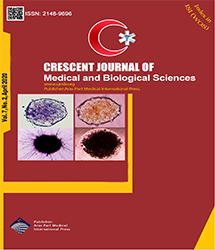
| Original Article | |
| Are We Facing a Dramatic Increase in Voluntary and Involuntary Childlessness in Iran That Leads to Lower Fertility? | |
| Hajiieh Bibi Razeghi-Nasrabad1, Mohamad Jalal Abbasi-Shavazi2, Maryam Moeinifar3 | |
| 1National Population Studies and Comprehensive Management Institute, Tehran, Iran 2Department of Demography, Faculty of Social Sciences, University of Tehran, Tehran, Iran; & Melbourne School of Population and Global Health, University of Melbourne, Melbourne, Australia 3Department of Demography, Faculty of Social Sciences, University of Tehran, Tehran, Iran |
|
|
CJMB 2020; 7: 212-219 Viewed : 6429 times Downloaded : 5578 times. Keywords : Voluntary childlessness, Involuntary childlessness, Infertility, Low fertility, Iran |
|
| Full Text(PDF) | Related Articles | |
| Abstract | |
Objectives: In recent decades, fertility has decreased significantly in Iran. In many countries, childlessness is one of the major causes of low fertility. Thus, the present study focused on whether we are facing a dramatic increase in voluntary and involuntary childlessness in Iran that leads to lower fertility. Materials and Methods: Using secondary data analysis of 2000 and 2011 Iran Demographic and Health Survey (IDHS) and Individual Level Data from the 1996-2016 Census Sample Files, the study aimed to estimate childlessness and to assess the level of voluntary and involuntary childlessness in Iran. The Kaplan-Meier survival function was also used to estimate the percentage of women who fail to have a first birth after marriage. Results: According to the census data, the proportion of childless women within the age group of 15-39 increased during 1991-2016. In contrast, the rate of lifetime childlessness remained around 4% by 2011 and then raised slightly by 2016 and reached 5%. The survival function of childlessness showed that only 4 and 6.5% of women in 2000 and 2011 remained childless after 10 years of marriage, respectively. Conclusions: With regard to the low lifetime childlessness rate, advances in the health system, and ideal fertility above two children, it was concluded that the fertility decline in Iran is associated with a decrease in the number of large families and the long birth interval and no rise in childlessness. Although providing support for infertile couples is important, any exaggerated claim about voluntary and involuntary childlessness leads to the adaption of inappropriate and ineffective policies toward increasing fertility. |
Cite By, Google Scholar
Google Scholar
PubMed
Online Submission System
 CJMB ENDNOTE ® Style
CJMB ENDNOTE ® Style
 Tutorials
Tutorials
 Publication Charge
Medical and Biological Research Center
About Journal
Publication Charge
Medical and Biological Research Center
About Journal
Aras Part Medical International Press Editor-in-Chief
Arash Khaki
Deputy Editor
Zafer Akan


















